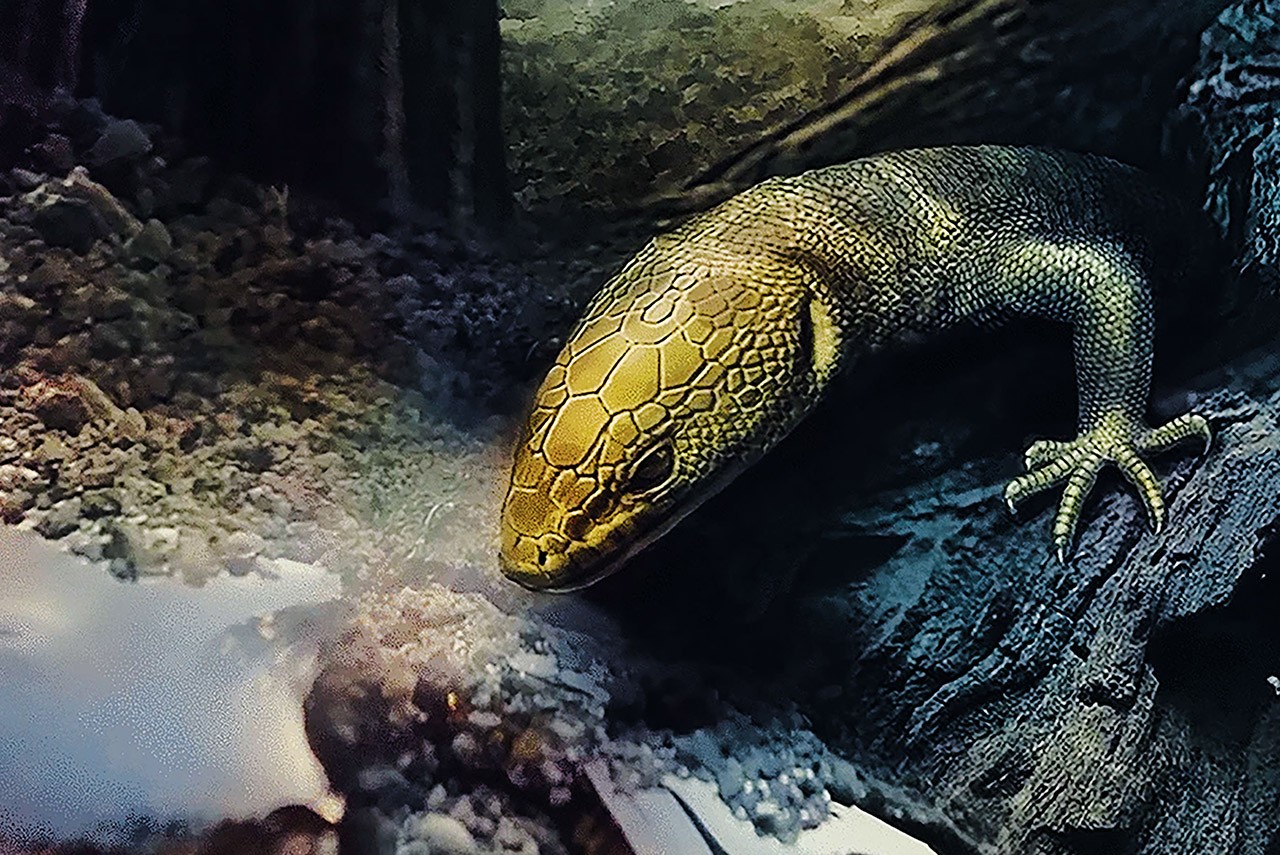Ancient History
Villanova researchers study 110 million-year-old fossil discovery
By Claire Curry

A Villanova Biology professor and two of his former students were part of an international team called to Bangkok, Thailand, to offer their unique expertise on fossil specimens discovered in a mine in Myanmar. Soon, they found themselves looking into the eyes of a young lizard that likely roamed the Earth with dinosaurs 110 million years ago.
This incredibly well-preserved creature was encased in amber that formed from tree resin. As it hardens, the popular gemstone can trap and preserve small specimens of animals and insects. Because the 1.4-inch lizard was preserved intact, the researchers were able to take a clear CT scan and reproduce a full 3D rendering of the creature’s body, scales and eyes. Known as the Retinosaurus hkamtiensis, it is the first definite representative of a group of lizards known as scincoideans, which includes skinks, armored lizards and night lizards.
“Amber gives us a window to a really critical time when lizards and a lot of other things were diversifying, and we see this early period of evolutionary experimentation,” says Aaron Bauer, PhD, professor of Biology and the Gerald M. Lemole Endowed Chair in Integrative Biology. “It is a window to the world that we don’t get with traditional rock fossils.”
“ You’re looking into the face of an animal that lived when the dinosaurs were roaming around. ”
- Aaron Bauer, PhD
Swiss gemologist Adolf Peretti, PhD, made the initial discovery of this fossil collection and then invited an elite team to bring their expertise to the table—scientists, digital technology specialists, zoologists and specialty researchers from across the globe.
Having described more new species of reptile than any other living scientist, Dr. Bauer was a natural pick for the team, which also included Edward L. Stanley, PhD, ’09 MS, now a 3D lab director at the Florida Museum of Natural History, and former Villanova post-doctoral fellow Juan D. Daza, PhD, associate professor of Biology at Sam Houston State University in Texas.
The team has been closely examining the fossils since they initially convened in Bangkok in 2019, publishing their findings in several renowned journals, including Science Reports, Current Biology and Science. “I think it certainly has set in motion what I think will be a fairly long-lasting collaboration that includes a good diversity of people with different skills,” Dr. Bauer says.
NEXT IN NOVA-WORTHY
The history behind the Red Mass, a centuries-old law tradition that's been celebrated on Villanova's campus since 1957